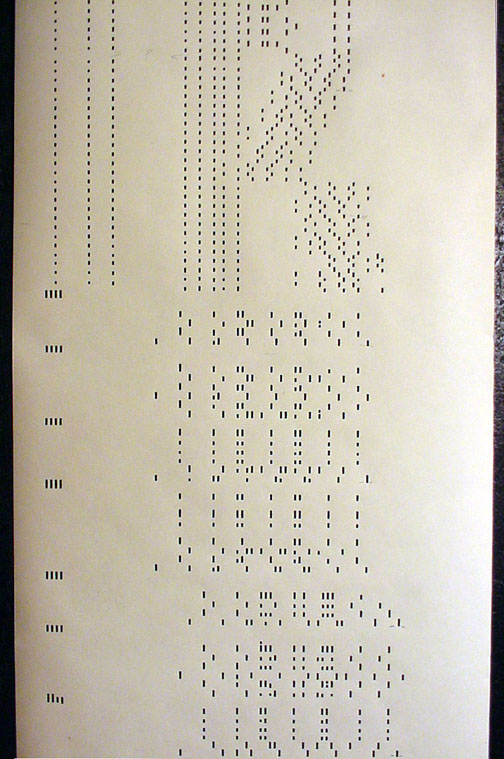
This is a view of "TIME SPACE" #96 in the Pleyel version of BALLET MECANIQUE. (Incidentally, the earlier versions of these rolls had "some" — meaning "very few" — stampings for the blocks of music. The later French Aeolian rolls, as shown here, eliminated them entirely ... but by then silent movie accompaniment was rapidly becoming passé, this being the 1927-1931 period, when talking pictures changed the industry.)
Note that the perforations are "connected", as in organ playing, and are not staccato in nature. If you are familiar with the old QRS Bluebird Ballad rolls of the 'Twenties (often tremolo march arrangements, not 'ballads' per se!), this should give you an idea how who the Pleyel rolls strike the keys. No Pianolist, i.e. the roll interpreter, can add this NECESSARY 'KEYBOARD ATTACK' EFFECT during the performance. On the other hand, if one wished to play the ARTCRAFT Interpretive Arrangement of today in a muddy, slushy (and highly boring!) fashion, the operator needs only to make creative use of the sustaining pedal lever (or button).
Not shown in the photograph, but typical of this particular brand, is an irregular rhythm, something which is completely at odds with the premise of George Antheil's music, viz. in conveying the "pulsations" of heavy machinery. That annoying characteristic is typical of old Pleyel arrangements, including their Fox Trot releases of the day. Erratic rhythm seems to be a specialty with Pleyel, matched only by their thin, poor quality paper and the irregular length of the perforations. (Anything directly transcribed from sheet music notation should have homogeneous or 'equal length' perforations for the same time value!)
It's no wonder that composer Antheil eventually discounted the music roll origins of his ground-breaking composition! Bad rolls are bad rolls, after all.

Now, click the link below to view this same musical passage as it appears on an ARTCRAFT Interpretive Arrangement --